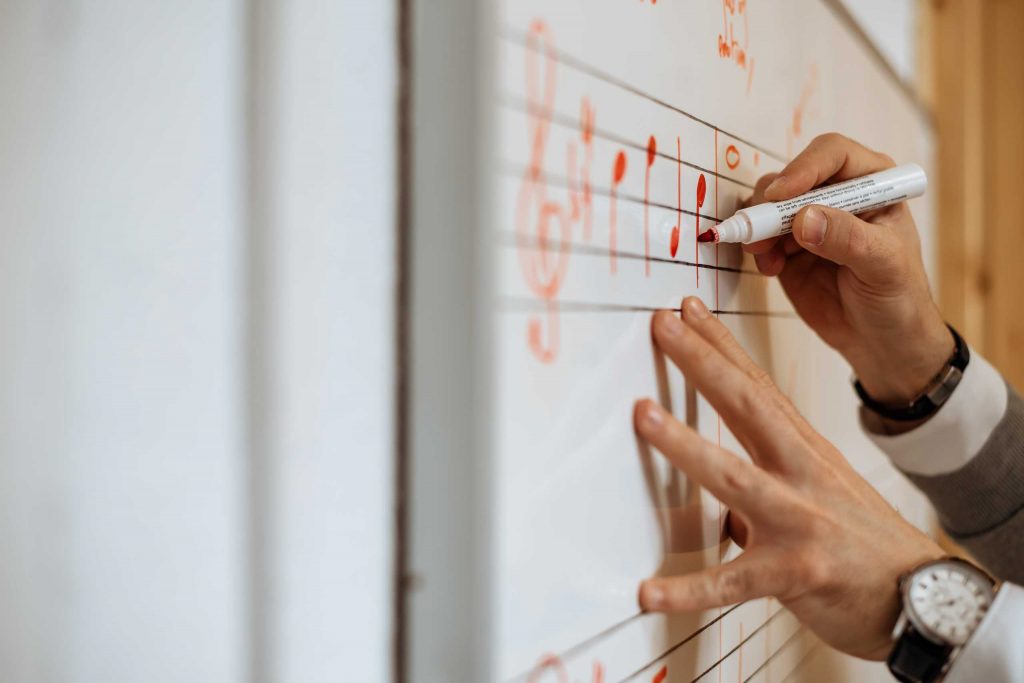Let’s be honest — when most people hear the words “music theory”, they think of dusty textbooks, endless rules, or intimidating lectures. It’s a subject with a bad reputation.
But theory doesn’t have to be dry.
In fact, when taught the right way, it can be one of the most engaging and empowering parts of your musical journey.
At Music Theory Academy, we believe that music theory should feel like discovery — not discipline.
Why Theory Feels Boring (And Why It Shouldn’t)
The problem isn’t the content — it’s the presentation.
So many music theory classes start with terminology and analysis before ever showing how it connects to real music.
That’s like teaching someone grammar before they’ve ever heard a sentence spoken.
Here’s what often goes wrong:
- Too much vocabulary, too fast
- Not enough sound-to-symbol connection
- No clear sense of why you’re learning it
Result? Confusion, frustration, and the feeling that theory is for someone else — not you.
But that’s not how it has to be.
What Makes Theory Fun?
We’ve found that music theory becomes enjoyable — even addictive — when three things are true:
1. It’s connected to music you love
Learning about dominant chords is fun when you hear them in your favorite pop or jazz track.
2. It’s visual and interactive
Seeing how a chord is built, watching it change color on a chart, dragging intervals into place — this makes the abstract concrete.
3. It’s built around curiosity
Instead of asking “What is a diminished chord?”, ask: “Why does this moment in the song sound tense and cinematic?”
When theory solves a mystery you already care about — it sticks.
Our Approach: Learn Through Discovery
We don’t teach theory by dumping facts. We guide you through a discovery process.
For example:
- You listen to a melody — then find its shape on paper
- You hear a progression — then learn why it pulls you forward
- You see a rhythm — then tap it, feel it, and rewrite it
We don’t separate theory from music — we embed it inside the experience of listening, playing, and creating.
Tips to Remember Theory Long-Term
Here are some simple ways to make theory stick — not just for the test, but for life:
Use Color
Color-code different intervals, chord types, or modes. Your brain will thank you.
Move Between Paper and Sound
Write out a rhythm, then clap it. Sing a scale, then notate it. Bounce between formats.
Associate with Emotion
Remember how a minor chord felt dark? That emotional link makes it unforgettable.
Quiz Yourself — Casually
While listening to music, try to name the key or find the beat. Make it a game.
Revisit Concepts Often
Spaced repetition (small reviews over time) works far better than cram sessions.
Theory Fuels Creativity
Many musicians fear that theory will make them rigid — too logical, too formulaic.
But in reality, theory gives you more options, not fewer.
- It helps you break rules — intentionally
- It shows you new tools you didn’t know you had
- It helps you explain and repeat what works
A songwriter who understands harmony writes faster.
A producer who knows rhythm theory programs better beats.
A pianist who reads form can improvise with more control.
Final Thought
Music theory isn’t a burden. It’s a bridge — between sound and meaning, instinct and understanding.
It doesn’t replace your creativity. It supports it. Shapes it. Elevates it.
When taught with color, context, emotion, and sound — theory becomes a tool you’ll use forever.
And yes — it can even be fun.

